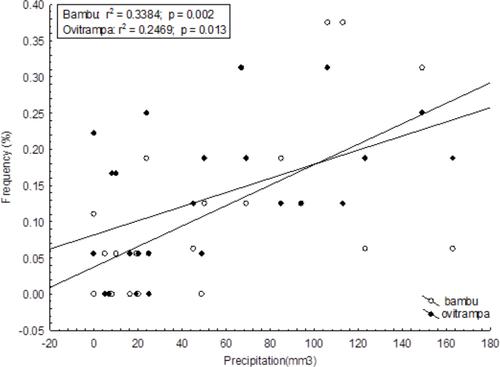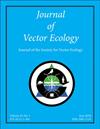The mosquito Aedes albopictus is a vector of several arboviruses transmitted to humans. They have a sylvatic behavior, occurring in rural areas. However, reports of their adaptation to anthropic environments have been increasing. The aim of this study is to investigate the presence and distribution of Ae. albopictus in the Metropolitan Region of Belém in the Brazilian Amazon and evaluate its preference for either natural or artificial breeding sites under the weather conditions of the Amazon. Ovitraps (artificial breeding sites) and bamboo internodes (natural breeding sites) were deployed in neighborhood peridomiciles during the dry and rainy seasons. The results showed that the presence of Ae. albopictus was recorded in 71.4% of the neighborhoods during the dry season and in 69.2% neighborhoods during the rainy season, thus indicating a wide distribution in the region. A significant increase in the frequency of the capture of mosquitoes in areas with higher vegetation cover was observed during the dry season (R2 = 0.2995; p=0.018) but not during the rainy season (R2 = 0.044; p=0.43). Comparing the weekly frequency of Ae. albopictus on positive bamboos and OVT, no significant difference was observed between them (t= 0.559; df= 23; p=0.58). A significant increase in the number of positive breeding sites was observed with increased rainfall for both bamboo (R2 = 0.33; p= 0.002) and OVT (R2 = 0.24; p= 0.013). This is the first report of Ae. albopictus in the metropolitan area of Belém. The findings suggest a wide distribution in the studied area, preferably in areas with more extensive vegetation cover. Additionally, the mosquito population showed the ability to use both natural and artificial habitats.



